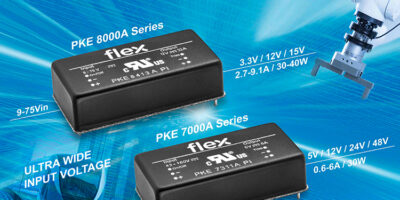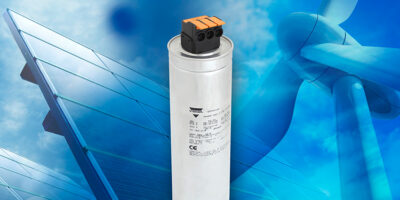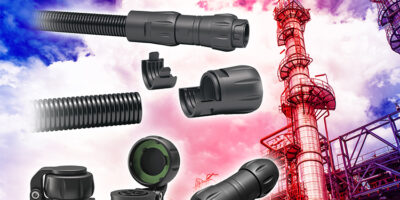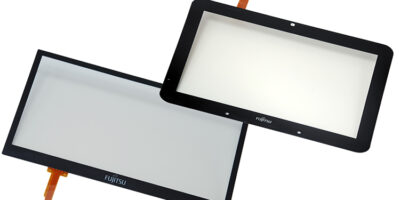Wide input DC/DC converters serve industry and rail
Designed for the industrial and railway sectors, the PKE-A series of DC/DC power modules have been announced by Flex Power Modules.
They are provided in sealed and encapsulated packaging, to ensure they will work reliably when subjected to dust, moisture, severe vibration and other harsh conditions.
For Industrial applications, the PKE8000A series provides rugged DC/DC solutions in the industry standard 2.0 x 1.0 inch (50 x 25mm) form factor, running from 12, 24 or 48V supply voltages with a wide input range of nine to 75V. Delivering up to 40W of output power at up to 91 per cent efficiency, the series also offers mean time between failures (MTBF) of up to four million hours, and input to output isolation of 2250V DC. The devices meet the latest IEC/EN/UL62368-1 safety standards.
For railways applications, the PKE7000A series is packaged in the same industry standard form factor, but operates from a 43 to 160V input, delivering up to 30W. This makes it suitable for the majority of on-board requirements running from 72V and/or 110V nominal supplies, most commonly found in the rail industry. The devices comply with the EN50155 railway standard and offer MTBF figures of up to five million hours to satisfy the most demanding applications.
Both the PKE8000A and PKE7000A families are available now for sampling and volume production requirements.







